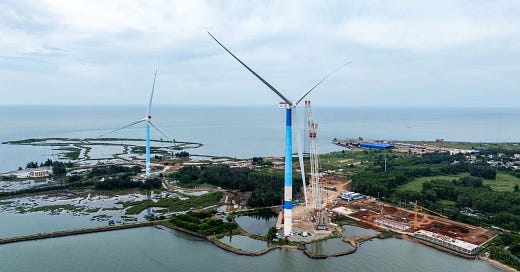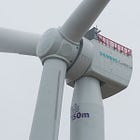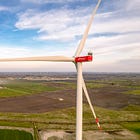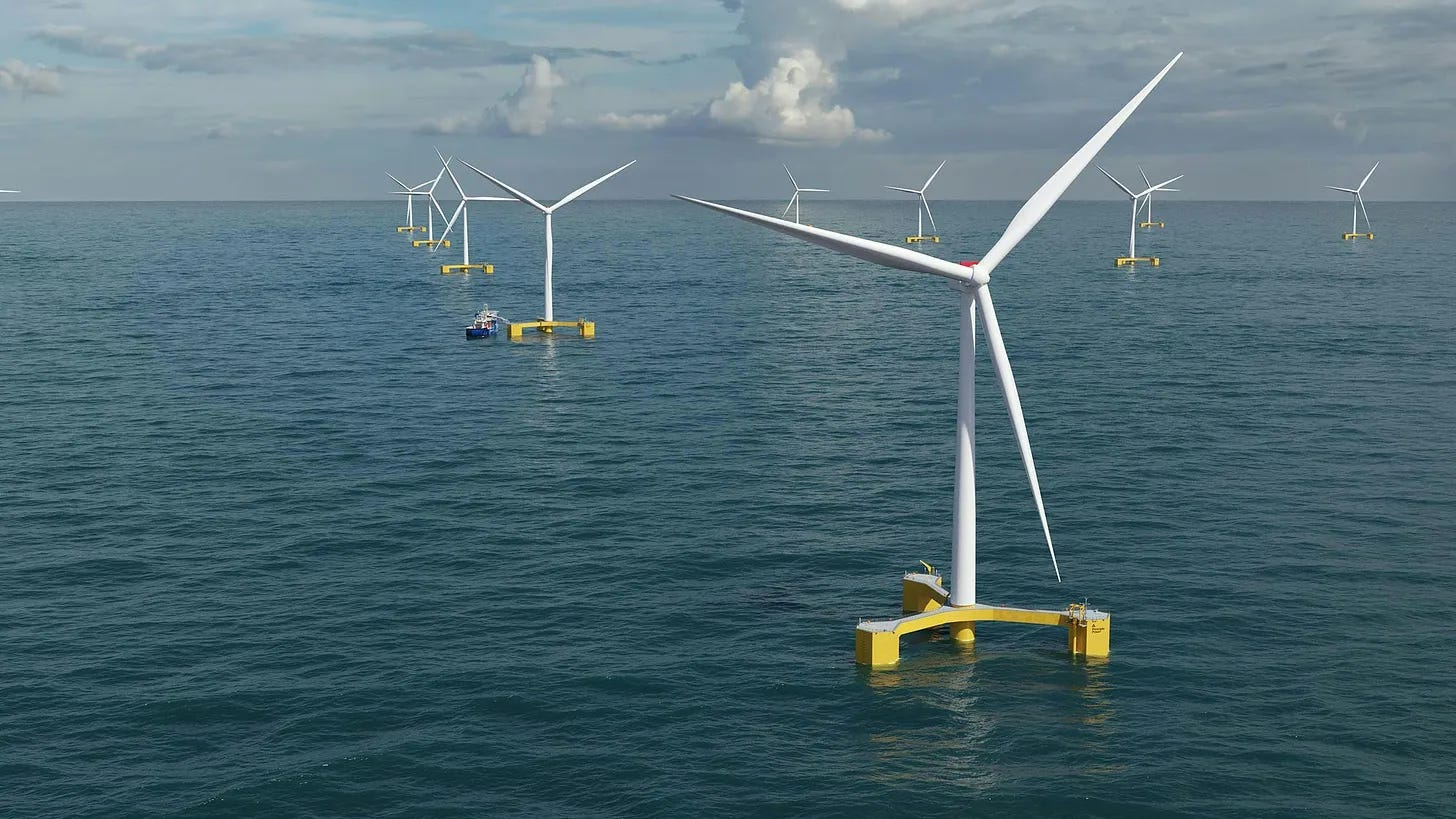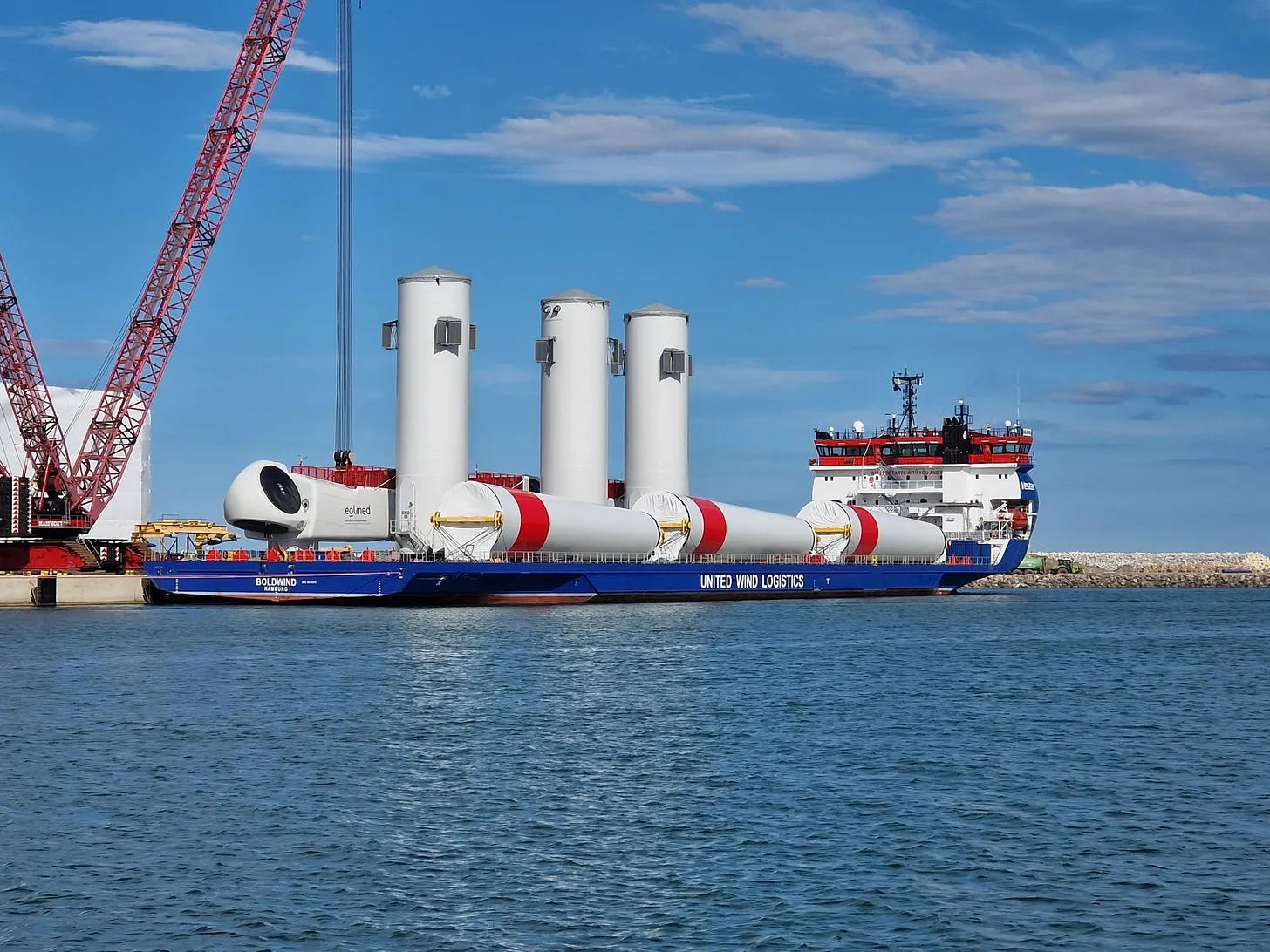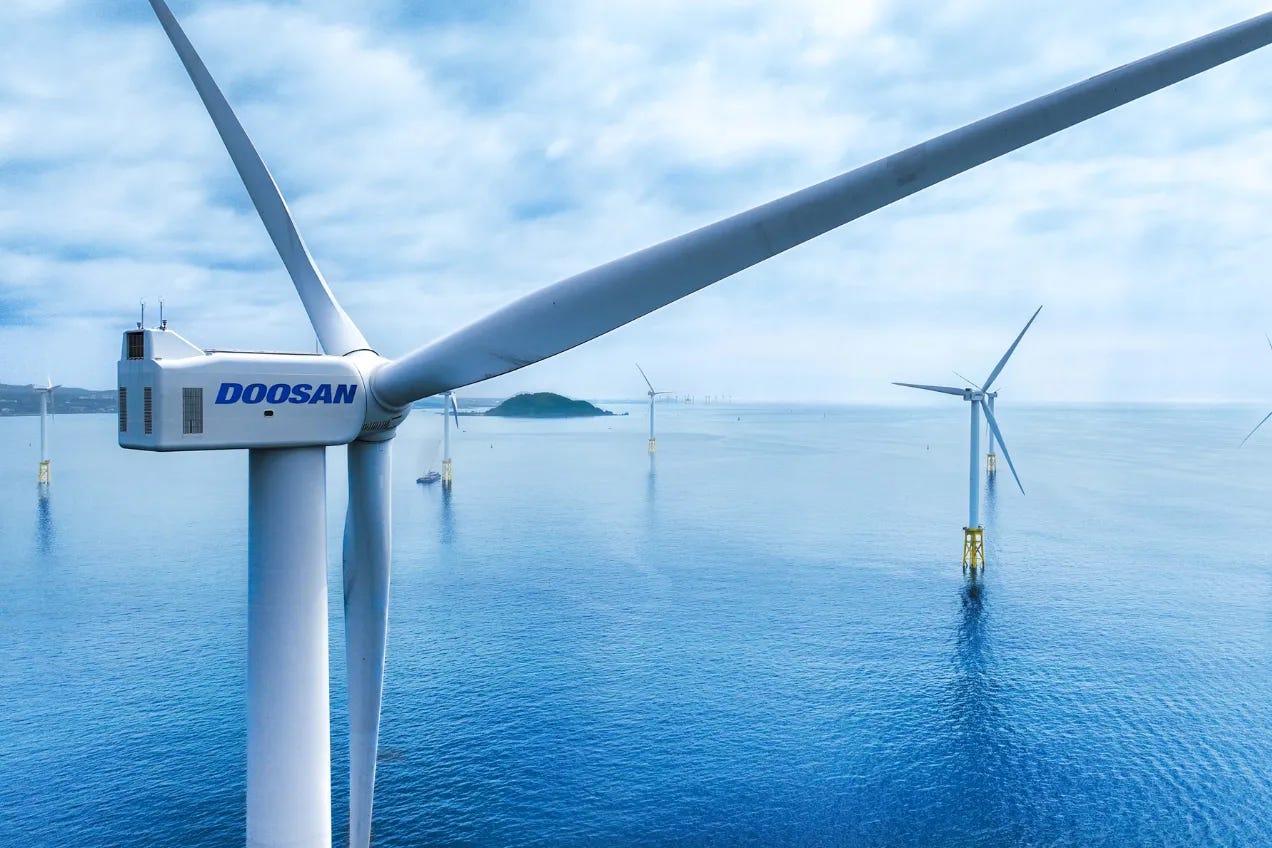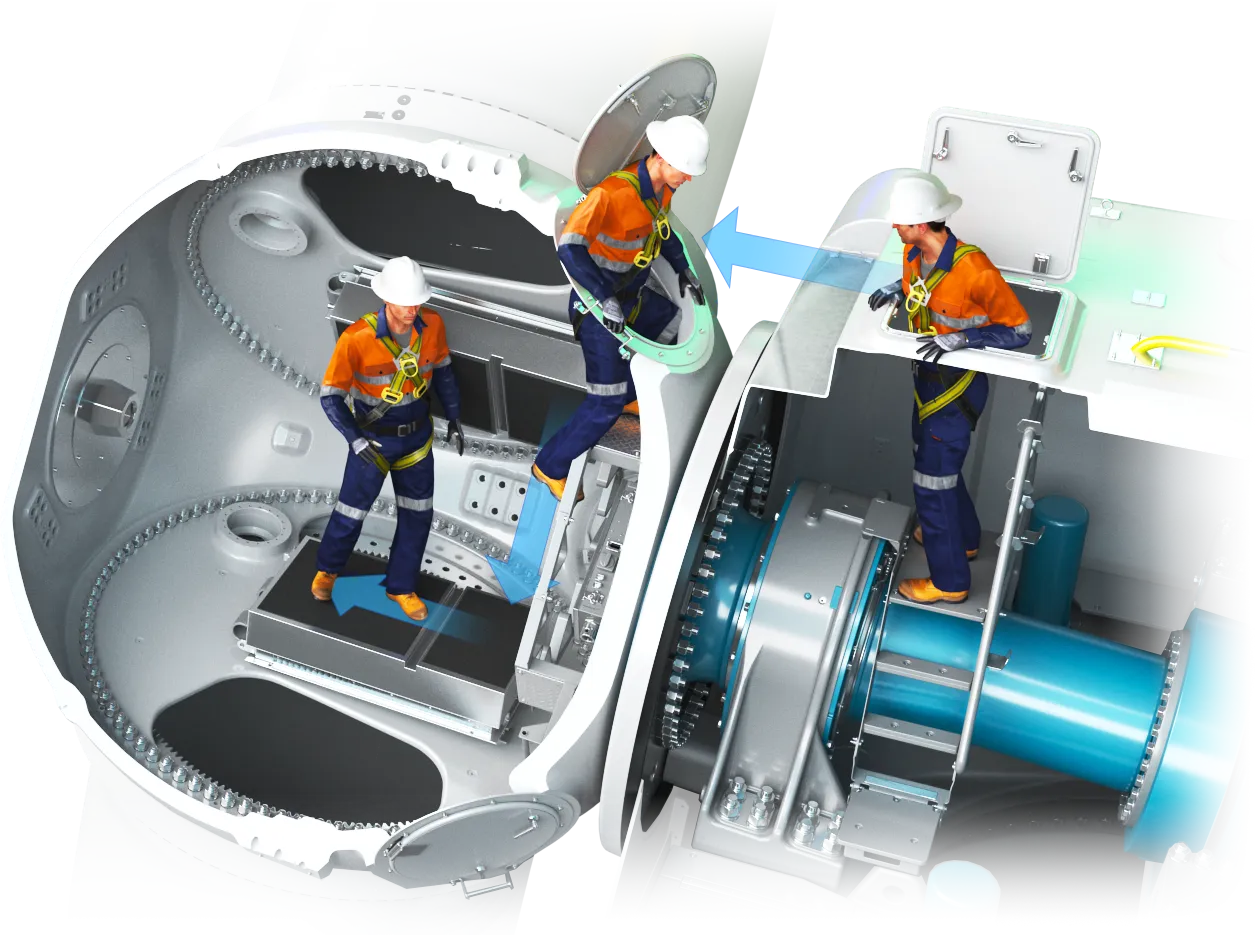Windletter #90 - Mingyang installs the world’s largest wind turbine with 20 MW
Also: Typhoon Yagi destroys several wind turbines in China, Principle Power presents new designs, hub access maneuver, and more.
Hello everyone and welcome to a new issue of Windletter. I'm Sergio Fernández Munguía (@Sergio_FerMun) and here we discuss the latest news in the wind power sector from a different perspective. If you enjoy the newsletter and are not subscribed, you can do so here.
Windletter is sponsored by:
🔹 Tetrace. Specialized services in operation and maintenance, engineering, supervision, inspection, technical assistance, and distribution of spare parts in the wind sector. More information here.
🔹 RenerCycle. Development and commercialization of solutions and specialized services in the circular economy for renewable energies, including comprehensive dismantling of wind farms and waste management, refurbishment and sale of components and wind turbines, management and recycling of blades and others. More information here.
Windletter está disponible en español aquí
Last week, it was impossible for me to release an edition. It was an intense week with several work and personal commitments. But we're back with strength.
Moreover, this week we celebrate that we are now more than 3,000 subscribers in Windletter between the Spanish edition (>2,500) and the English edition (>500). Thank you all for being here every week, because without you all of this wouldn’t make sense.
I would also greatly appreciate it if you could help me continue growing by sharing Windletter with your colleagues and friends 👇
Additionally, I’ll give you a heads-up that we will soon have a new guest contributor edition, so if you don’t want to miss it, subscribe.
_
The most-read content from the last edition was: the video of the isolated hybrid system from Tropicana, the video with the technical explanation of the floating platform from Gazelle Wind Power, and the article on whether Chinese wind turbines are bankable.
Now, let's get to this week’s news.
🌬️ Mingyang installs the world’s largest wind turbine with 20 MW
The level of activity and innovations that Mingyang has been presenting lately is frenetic. It has been named the preferred supplier for a European offshore wind farm, has reached a preliminary agreement for a nacelle factory in Italy, has launched the OceanX floating dual-rotor prototype, and has entered new markets...
One of its latest feats has been the completion of the assembly of its MySE 18.X-20 MW prototype, which, according to the company (and if my memory serves me correctly), has become the most powerful wind turbine in the world. As early as December 2023, Mingyang had manufactured a nacelle for this same model.
According to Mingyang itself on its LinkedIn account, this model can have a rotor diameter between 260 and 292 meters, and according to Windpowermonthly, this unit is equipped with the 292-meter rotor.
Mingyang says that this wind turbine is not specifically designed for the Chinese market but is also suitable for locations in Europe and other international markets.
A video of the assembly has also circulated on LinkedIn, which I’ll share here:
But let’s not forget that in October 2023, Mingyang already announced a 22 MW model with a 310-meter rotor, which theoretically it should be working on.
The truth is that, as I said at the beginning, it’s surprising the number of innovations Mingyang is presenting, considering that many of them involve hundreds of millions of euros in investment (developing and installing prototypes, announcing factories…). Someone on X/Twitter wondered how such a level of investment is possible considering the modest nature of its financial results (or at least, what is made public).
On another note, something that is becoming increasingly clear is that the communication strategy of Chinese OEMs has been changing radically in recent times, with most of them (especially the most active outside their borders) generating much more content on social media, sponsoring events... in short, making themselves visible and trying to make a name for themselves.
This very year, other Chinese manufacturers like Dongfang Electric and CSSC Haizhuang have also installed 18 MW offshore prototypes. Also, Siemens Gamesa is said to be close to installing a 21 MW prototype.
_
▶ Mobility and sustainable cities have a meeting in Málaga this September... and you're invited
The Greencities & S-Moving event is just around the corner, taking place in Málaga on September 24 and 25. An event with over 15 years of history where you can discover how cities are evolving to become smarter and more sustainable, as well as the future of urban mobility.
At this event, international specialists from all over the world will discuss future challenges in urban and mobility areas, from the use of innovative alternative fuels to the implementation of low-emission zones and sustainable ports.
If you're a Windletter subscriber, you can register for free for the event through this link.
_
🌪️ Typhoon Yagi destroys several wind turbines in China
Incredible images have come from China, where Typhoon Yagi has caused the collapse of several 6.25 MW Windey turbines in Mulan Bay. According to the information I've found, 6 out of a total of 13 turbines have collapsed.
The truth is, the images are devastating.
Apparently, this is a wind farm that was being repowered. In fact, if we look at the existing turbines on Maps, we can see that they are older units and not painted in colors like the ones in the video.
Steve Gilkes makes some interesting reflections on this accident in this LinkedIn post, suggesting that wind speeds may have exceeded 100 m/s.
As Steve rightly points out, there's a very relevant point in the video: not all the turbines collapsed. The reason is that the position of the nacelle when the wind gust hits is crucial to reducing loads and ensuring the turbine's integrity.
Perhaps it was impossible to correctly orient all of them, as some comments on LinkedIn suggest that the turbines were still in the commissioning phase. However, there are solutions for this, like the GUYS system that we discussed in edition #81.
Recently, we covered a similar event in Iowa, USA, although that time it was due to a tornado, and the victims were several Vestas turbines.
_
_
⚙️ Principle Power presents two new floating platform designs
Principle Power has introduced two new designs for semi-submersible floating wind foundations: the WindFloat TC (tubular, central column) and the WindFloat FC (flat panel, central column).
According to Principle Power, these designs are natural evolutions of its existing technology. Until now, the company’s designs were based on a perimeter column (see picture), while the new ones feature a central column.
The truth is, I’m not aware of the benefits of one design over the other, but for some reason, Principle Power has decided to include both in its portfolio. It’s possible that the reason is to use one platform or the other depending on the characteristics of the wind turbine it will equip, but also the resources available in the manufacturing plants (which could vary depending on the location).
_
🌊 The Eolmed floating wind farm progresses with the arrival of the Vestas V174-10.0 MW
BW Ideol is one of the companies best positioned in the technological race to find reliable, industrializable, and competitive floating platforms.
Currently, the company is building, together with Qair and Total, a 30 MW pilot project (Eolmed) in France. The project includes 3 units of its floating design with V164-10.0 MW turbines. It should be operational this year.
In fact, just a few weeks ago in Windletter, we shared some images of the floating platforms under construction in port. Now, the brand-new Vestas V164-10.0 MW turbines have arrived at the port and are awaiting installation on the platforms.
In France, there’s another similar pilot project, Provence Grand Large (3 x SG 8.0-167 DD of 8.4 MW), which we’ve already talked about here.
_
🔧 The South Korean industrial giant Doosan Enerbility plans to develop a 10 MW turbine
Doosan Enerbility is an OEM unknown to most of you reading this (myself included), but the truth is that it has a portfolio of wind turbines with 3 MW, 5.5 MW, and 8 MW capacities and rotor diameters ranging from 134 to 205 meters.
Its track record in wind energy is a modest 339.5 MW installed across both onshore and offshore projects.
Now, Doosan plans to develop a 10 MW turbine. To do so, it will collaborate with several large local companies, including the country's main utilities. The goal is to develop an offshore turbine optimized for the country's low wind speeds. It will have 10 MW of power and a 205-meter rotor diameter.
Doosan Enerbility will be the main contractor for the project, responsible for the design, assembly, and installation of the turbine prototype. The company plans to invest 50 billion won (37.2 million dollars) in the project, which doesn’t seem like much to develop a prototype of these characteristics.
I find it interesting that companies like this keep these subsidiaries “alive” and continue investing and betting on wind technology, considering the competition in the sector, especially with Chinese OEMs just around the corner. Not too long ago, the Korean company Samsung was also in the sector but ended up abandoning it.
_
⚠️ Not for the faint-hearted: the high-risk maneuver to enter the hub
The job of a wind turbine maintenance technician is really tough. However, within the daily challenges, there are some tasks and maneuvers that are especially delicate.
One of them is accessing the hub, which depending on the wind turbine model, can be considered a maneuver not for the faint-hearted.
In some machines, access to the hub is done through what we might consider the “nose” of the wind turbine, requiring the technician to exit to the outside of the nacelle and rappel down to enter through the “tip” of the hub (see picture).
A maneuver not suitable for everyone, as you can see in the following video of a Nordex N90:
In many other platforms, access to the hub is much less complicated, allowing entry from the inside of the nacelle (in the space between the main shaft and the hub itself) or from the outside of the nacelle but through a hatch located in a much easier-to-access spot.
For example, the photo below shows a GE turbine from the Sierra platform.
And I’m also leaving you a video:
In short, this shows that maintenance technicians were not always taken into account (especially in the past) in terms of the 25-30 years that wind turbines will be in service.
In more modern platforms, there has been significant improvement, and much more attention is given to ergonomics and safety.
Thank you very much for reading Windletter and many thanks to Tetrace and RenerCycle, our main sponsors, for making it possible. If you liked it:
Give it a ❤️
Share it on WhatsApp with this link
And if you feel like it, recommend Windletter to help me grow 🚀
See you next time!
Disclaimer: The opinions presented in Windletter are mine and do not necessarily reflect the views of my employer.


